
Update: The new Focusrite Scarlett 4th Gen audio interfaces are now available for purchase on Amazon starting from $139.99 shipped.
The new 4th Gen Focusrite Scarlett audio interfaces are debuting today. The brand’s lineup of striking red recording interfaces has been among the most popular around for years, and it is finally ready to introduce the enhanced new Scarlett boxes. Three new models are making their first appearance today with updated designs alongside reengineered specs, and we have had the pleasure of testing out the new 2i2 dual input variant over the last few weeks. Head below for a closer look at the new Focusrite Scarlett 4th Gen audio interfaces.
New Focusrite 4th gen Scarlett audio interface lineup
Focusrite’s Scarlett lineup of audio interfaces has been a mainstay on “best of” lists across the internet for years – and for good reason. They have delivered relatively affordable recording solutions for XLR mics and guitars/instruments while easily being some of the best bang for your buck across the single, dual, or more output options if you ask me.
And now, the brand is finally ready to refresh the Scarlett interfaces with a range of new models, from the new entry-level Solo to the 2i2 dual input model we have been hands-on with for the last few weeks to the larger 4i4.
Here’s a general look at how the three new interfaces and recording bundles stack up against one another:
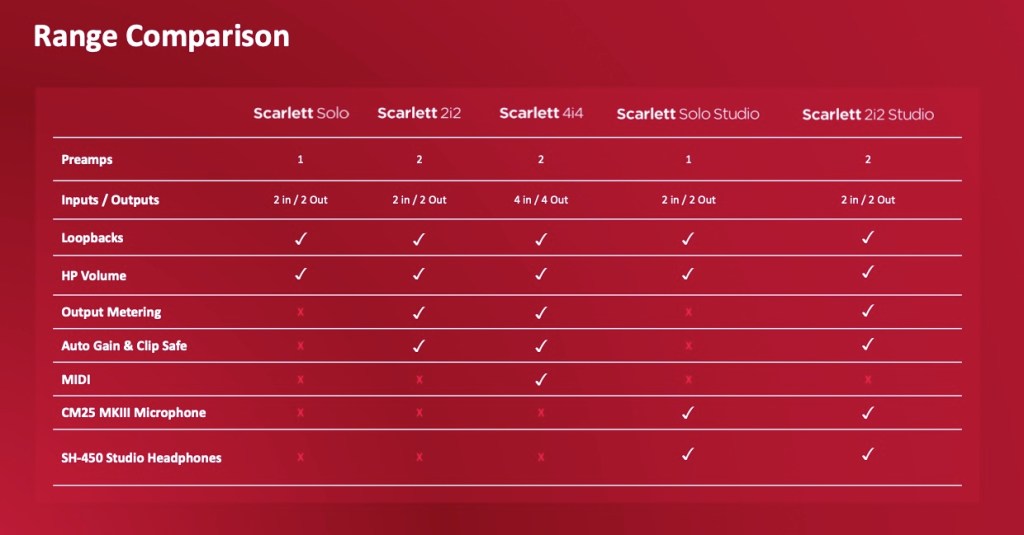
Build Quality
This time around, Focusrite has opted for a slightly more subdued yet modern look, without changing all that much or moving away from the eye-catching red design the lineup was known for. The Scarlett boxes are immediately recognizable and remain so. Don’t be fooled by the clone boxes on Amazon that have been trying to cash in on the brand recognition and reputation the lineup has garnered over the years.
A solid metal enclosure with a slightly shiny red treatment is adorned by more subtle Focusrite lettering along the top. Flat black metal panels house the I/O along the back while the gain pots, 1/4-inch jacks, settings options, knurled output volume knob, and headphone section are housed on the front. Everything is slightly more spaced out and easier to wrap your fingers around this time for me.
Multicolored LED metering – light halos surrounding both channel’s gain pots as well as the Output – indicate the appropriate gain input and levels in real-time, much like the color-coded backlit text labeling on each of the seven buttons on the front panel. All in all, it’s an attractive and practical design that somehow feels as fresh as it is familiar and as functional as it is aesthetically pleasing for me.
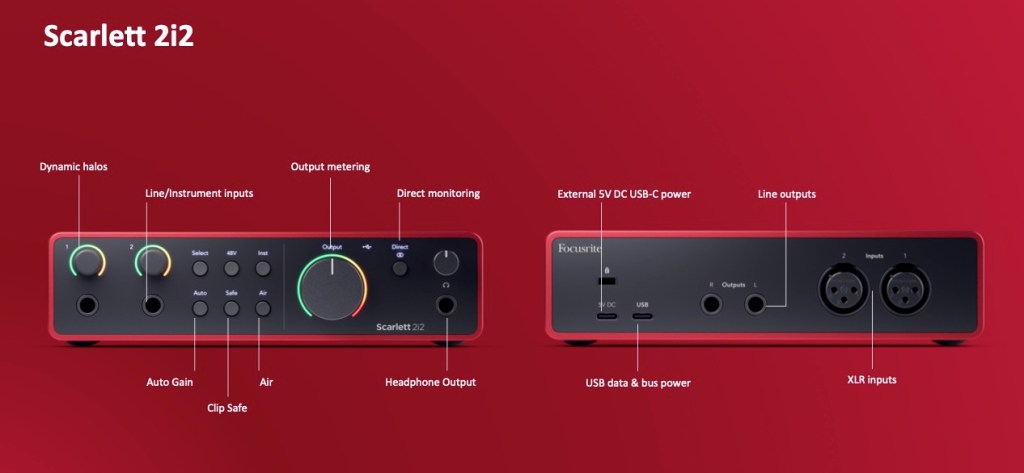
Focusrite 4th Gen Scarlett audio interface I/O
Focusrite tells us it has completely reengineered the audio circuitry on the new 4th gen interfaces and is delivering the same AD/DA converters used in its pro-grade $1,100+ flagship RedNet interfaces.
The new 4th gen Scarlett 2i2 features a pair of Neutrik XLR jacks for microphones, TRS 1/4-inch guitar/instrument connectors, stereo 1/4-inch line outputs for your speakers, and a stereo headphone jack joined by USB-C data and power ports.
The included connection cable is USB-C to USB-A with no adapter for connecting to USB-C only machines in the box. That is sort of annoying for this MacBook user, but nothing a cheap adapter from Amazon can’t fix.
Scarlett 4th Gen’s preamps
- Up to 69dB gain range
- Up to 116dB dynamic range
- Record microphones, guitars, or line-level equipment.
Completely redesigned headphone outputs
- Up to 116dB dynamic range
- More than enough power for high-impedance headphones
Line outputs
- 120dB dynamic range
- Super-low distortion as low as -112dB
- Incredibly flat frequency response
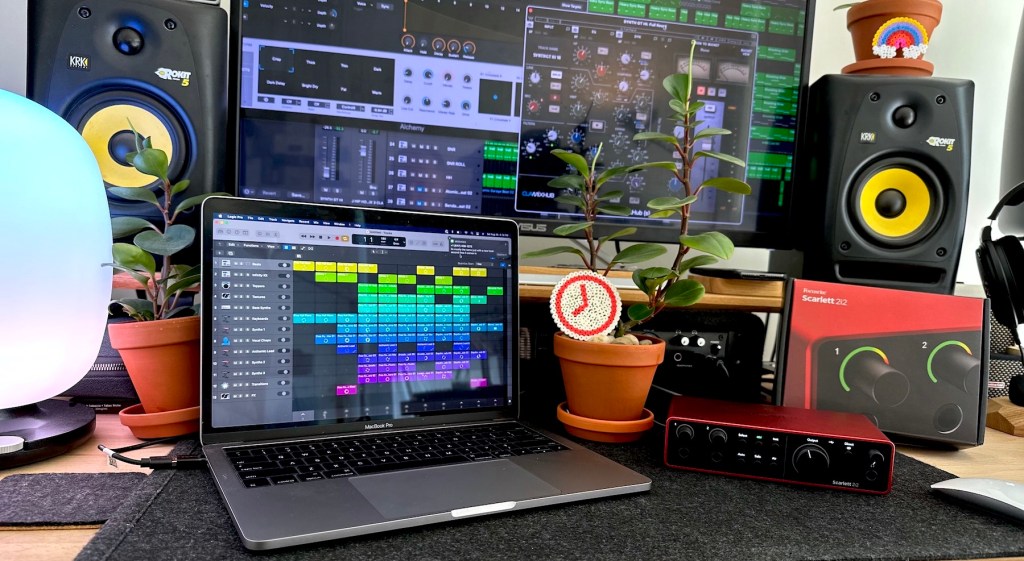
Scarlett 4th gen Auto-Gain
The Scarlett Auto-Gain is very much what it sounds like – the interface will automatically set a suitable gain signal setting for an “ideal” recording. You simply tap the Auto button on the front panel, play your instrument for 10 seconds – I really like how the white sort-of countdown LED streams backward around that channel’s halo as an indication here – and Scarlett will set the “perfect level for whatever you’re recording.”
I guess, in some ways, these auto-gain features are more geared toward beginner musicians who might not yet have a firm grasp on setting recording levels, and this is a wonderful implementation of such a feature – simple, understandable, and effective. Having said that, as someone who has been recording on audio interfaces of all types, from entry-level single-channel models to hardcore solutions in multitrack recording sessions for well over a decade, I actually found it to be quite a useful feature. Whether sketching out ideas or recording various instruments/players in a single session one after the other, a quick tap of the auto button while players are quickly warming up before hitting record gets the job done perfectly and without any interference in the creative process.
For the technically minded, Scarlett’s Auto Gain targets levels to peak around -12dBFS and, according to the brand, separates itself from other interfaces implementing similar tech by considering the following factors:
- Preamp noise floor
- Digital silence
- Inter-channel crosstalk
- Unwanted knocks or bumps on microphones
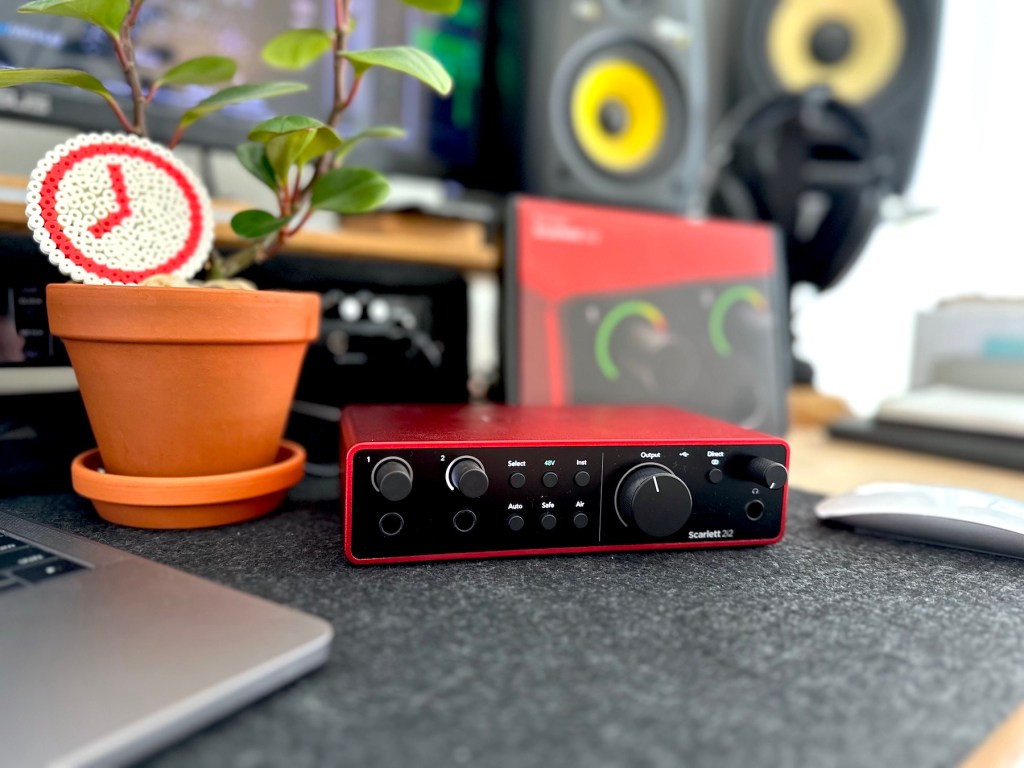
Focusrite 4th Gen Scarlett ClipSafe tech
The brand’s new ClipSafe tech also comes into play here as well. While I find these sorts of things to be nonfactors for the most part – there’s really no need to record a signal so hot that it will come anywhere close to clipping, in my opinion – it does what it says on the tin. If, for whatever reason, something changes on the signal path, like if the guitar player hits the destroyer of worlds pedal unexpectedly in the middle of a pass that negates the Auto-Gain adjustments made just seconds before, it will prevent harsh clipping by way of “a combination of analogue preamp adjustment and DSP.” Focusrite says, “Clip Safe significantly reduces the risk of clipping.” Again, it’s a welcomed addition to the experience here. It’s another notable feature for beginners (or folks who just don’t care about the technical side of things here) but not one I personally find much use for.
Here’s more of what Focusriute has to say about leveraging both the Auto-Gain and ClipSafe tech:
Through our user testing we found that Auto Gain can make a big improvement to the quality of audio that our customers achieved, however, when they get caught up in their performance it is easy to forget about levels, and just let the music take over – resulting in instruments unintentionally getting louder, and the perfect take being ruined by clipped audio. So we developed Clip Safe.

Breathing life into recording with enhanced Air
The brand’s 4th Gen interfaces are marking the return of its Air feature. Now completely reengineered, it is designed to take “your sound’s unique character and bring it to the front of the mix, adding truly musical presence and rich harmonic drive, just like a classic console in a big money studio.”
There are a couple of presets that leverage the all-analog Air mode at launch, including Presence and Presence + Drive. They are made to replicate the sonic character of the original Focusrite recording console – for those unfamiliar, Focusrite was founded back in 1985 by the iconic Rupert Neve initially to build extensions to Sir George Martin’s custom Neve recording desk at the world-famous AIR studios, going on to build it’s own recording consoles thereafter – and, practically speaking, add a sort of brightness to a recording. They sound something akin to the presence and gain controls on a traditional amphead to me. While I personally tend to prefer adding these sorts of sonic enhancements after tracks have been recorded, as opposed to dedicating myself to them or “printing them to tape,” I have to admit the Air mode sounds great and can easily see myself and others getting to point where using it becomes a staple in the recording process. We all, for the most part, want our recordings to be bright, legible, and exciting, right?
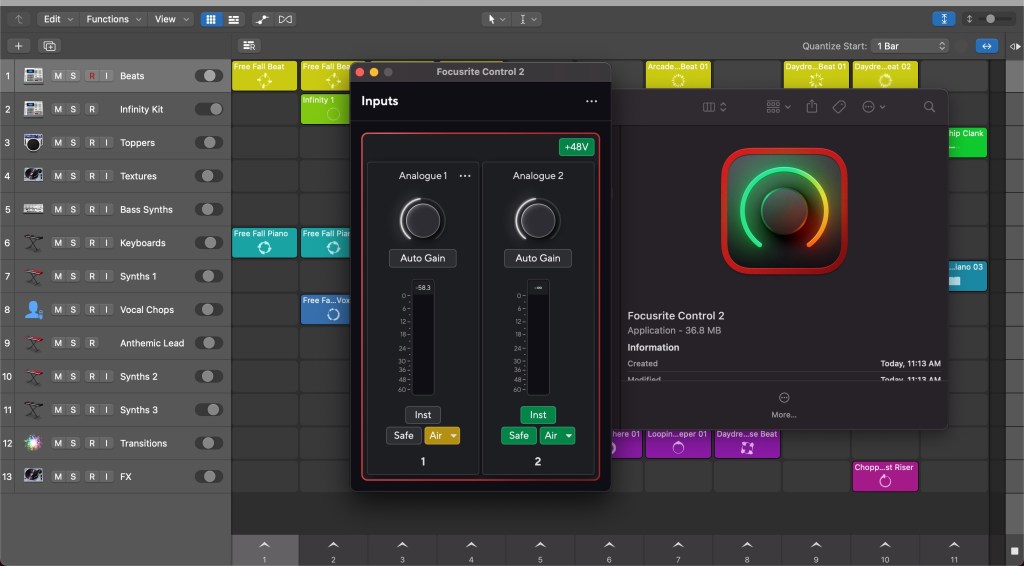
I might like the idea of being able to more specifically dial in the amount of “Air” here – specifically the drive side of things. You’re simply making binary choices to either have one of the two Air presets engaged or not (either on the box itself or via the companion app seen above), but this, again, plays nicely into the simple yet effective design ethos we have seen across the experience. Both options sound great and add a simple-to-use sonic/creative option to what is otherwise just a utilitarian piece of kit in the recording process.
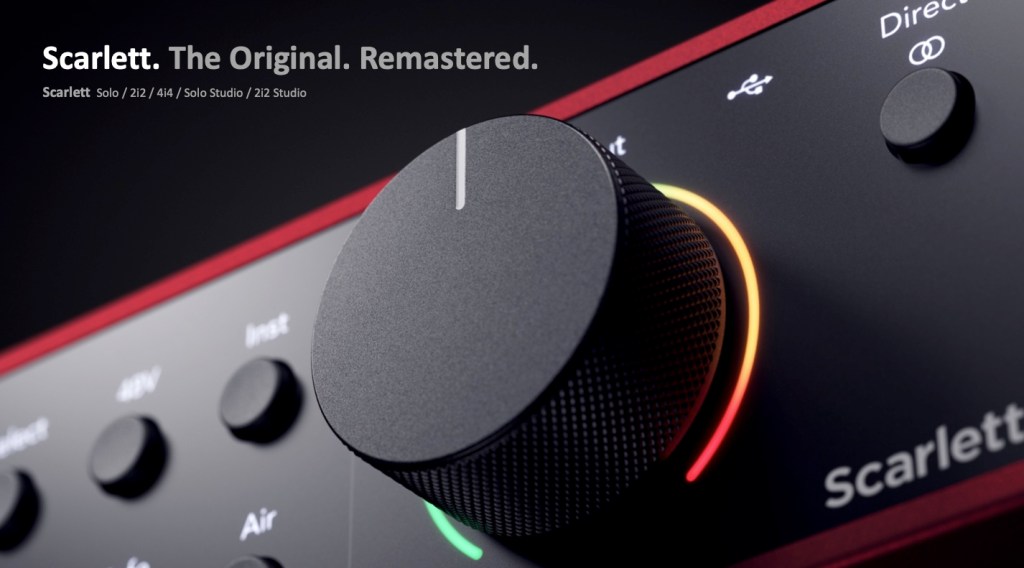
Focusrite’s new Scarlett audio interface lineup: Wrap-up
Focusrite’s new Scarlett audio interface lineup is once again delivering compelling solutions to home producers, music makers, or anyone else using XLR mics and guitars. The 4th generation Scarlett audio interfaces take everything that made the previous iterations so popular and, in my opinion, enhance all of it around every corner. The return of the Air Sonics and drive tech are wonderful options, while the clip guard and auto-gain additions bring some new tech into the experience that make the whole lineup feel like a more modern-day home recording interface. With relatively affordable prices, beginner-friendly options, quality-of-life automations, and pro-grade digital audio conversion, the new 4th Gen Focusrite Scarlett audio interfaces will be landing on my “best of” list this year, and I would bet they will almost certainly be on yours too.
Buy the Focusrite Scarlett 4th Gen audio interface from $139.99
FTC: We use income earning auto affiliate links. More.







Comments